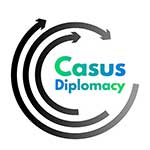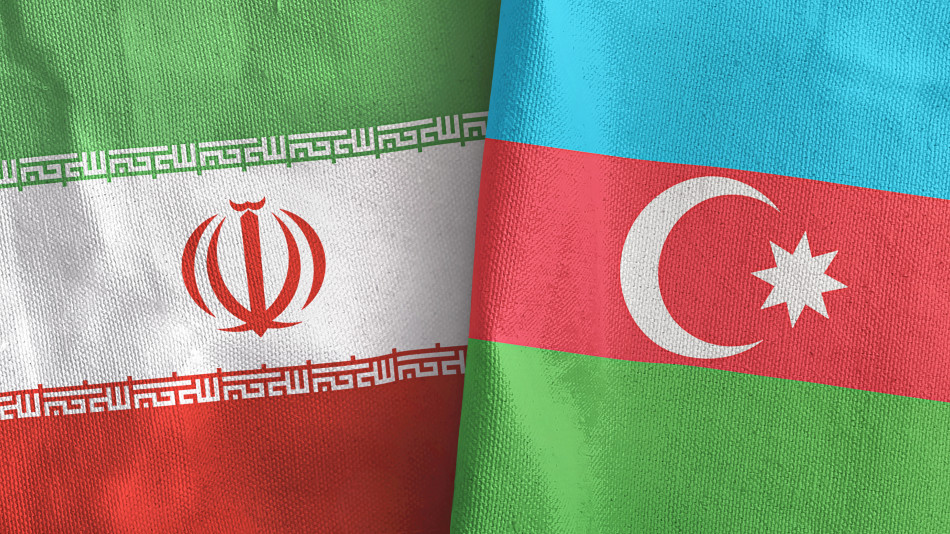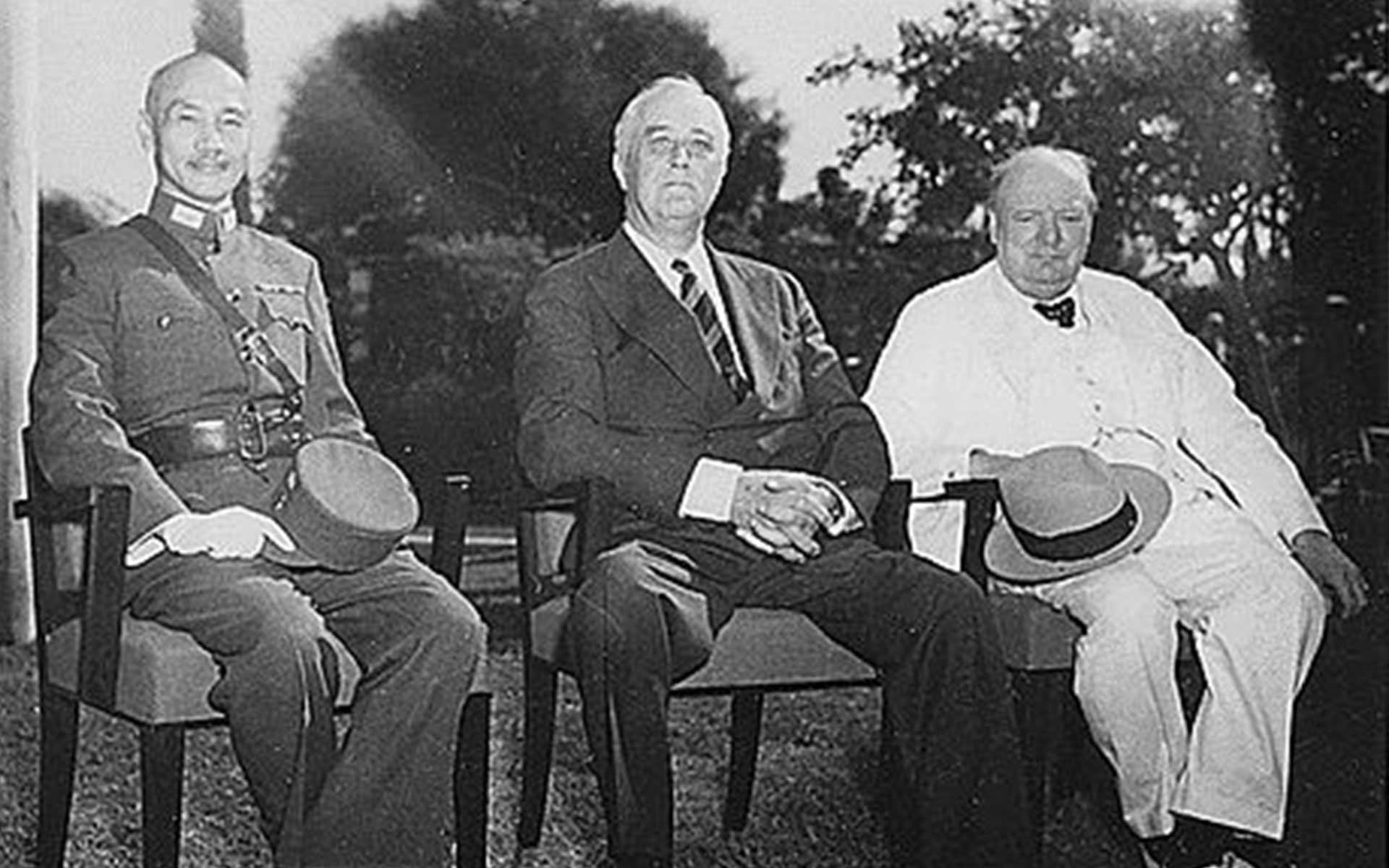Azerbaijan-Iran Relations From Past to Present
The Caucasus, in addition to its historical and cultural richness, has been a region of conflict throughout history, similar to the Middle East and the Balkans. Due to its geographical location, the Caucasus has always been at the political center of civilizations. Particularly since the 18th century, the attempts by Russia and Iran to stake their claims in this region have continuously subjected the various peoples of the region to oppression. The Azerbaijanis have always been caught in the struggle between these two regional powers. By the 20th century, the Caucasus was preparing to embrace democracy, having freed itself from Tsarist captivity. First, the Transcaucasian Confederation was established, followed by the democratic republics of Georgia, Azerbaijan, and Armenia in May 1918. Alongside these three states, the North Caucasus Mountain Republic, established by various Caucasian peoples within Russian borders, also existed. These states had achieved official recognition in the eyes of the world and participated in the Paris Conference. Interestingly, the representatives of the Azerbaijani Democratic Republic at the Paris delegation introduced the country as “Caucasian Azerbaijan” in official documents. This was due to the presence of the Azerbaijan province within Iran’s borders, and this name was used to differentiate between the two regions. The history of Azerbaijan and Iran is not significantly separate. These two countries share a common historical and cultural heritage. From the Medes to the present day, the cultural relationship between Azerbaijan and Iran has been profound and shared, although politically, the relationship between the two countries has been turbulent. The relationship between Azerbaijan and Iran extends beyond politics to the shared cultural and historical heritage. During the periods of the Persian empires, the geographical region of Azerbaijan was an indispensable part of these states. Since the beginning of the Turkish dynasties in Iran, the historical Azerbaijani people have lived, fought, and shared in the course of a common cultural history under the Shia sect with the Iranians. Even before Islam, the Zoroastrian religion in the region had spread its values to Azerbaijan, and as a result, both states continue to maintain religious and cultural values that have persisted since Zoroastrianism. Under the rule of Turkish dynasties such as the Safavids, Afshars, and Qajars, the peoples of these two geographical regions engaged in mutual cultural exchanges. Especially the status of Persian as the lingua franca throughout the Middle East has enriched the vocabulary of contemporary Azerbaijani Turkish. These intertwined peoples were doomed to the bitter irony of fate, as the Qajars were forced to cede the northern part of Azerbaijan, the territory of today’s Republic of Azerbaijan, to Russia as a result of the Russo-Iranian wars. The remaining Azerbaijani cities around Tabriz were separated from their kin under Iranian rule. In fact, the origins of the frequent political crises between the two countries today lie in the Treaties of Turkmenchay and Gulistan, which divided the people into South and North. The people who remained in the North were condemned to lose their cultural and religious values under Russian hegemony.
Nearly a century has passed since then. The impact of the French Revolution had reached the Caucasus. A century ago, the Azerbaijanis, who had fallen under Russian captivity, gained independence on May 28, 1918, and named their political entity the “Azerbaijan Democratic Republic.” This situation was confusing because, in Qajar Iran, there was also an Azerbaijan province, known as Iranian Azerbaijan, which included major cities such as Tabriz, Ardabil, and Urmia. To avoid issues with Iranian officials, the new republic was also referred to as “Caucasian Azerbaijan” in diplomatic documents. However, the Iranian officials of the time approached this matter positively and began establishing relations with the Republic of Azerbaijan. At the 1919 Paris Conference, one of the countries with which the Azerbaijani delegation had the most discussions was Iran. In his memoir dated October 28, 1919, the head of the Azerbaijani delegation, Alimerdan bey Topchubashov, noted that the Iranian delegation was in favor of the existence of a free Azerbaijani state in the Caucasus and declared that the new state would not be interfered with. The Iranian representatives indicated that they were ready to provide all kinds of guarantees to Azerbaijan based on mutual interests. The agreed-upon items during the inter-delegation meetings included the establishment of political and economic relations between Azerbaijan and Iran, and Iran’s official recognition of Azerbaijan as an independent state from Russia. However, these discussions and plans came to naught. On April 28, 1920, the Red Army occupied Azerbaijan, and relations with Iran were severed for the next 71 years.

Following its independence in 1991, Azerbaijan fell into a political crisis. After the forced resignation of the first president, Ayaz Mutallibov, Abulfaz Elchibey and his party came to power. During Elchibey’s one-year presidency, Azerbaijan-Iran relations deteriorated. Nevertheless, during the first Nagorno-Karabakh war, Iran sided with Azerbaijan, indirectly aiding the dispatch of Afghan mujahideen and providing weapons. Elchibey’s pro-Turkey and extremely anti-Iran, anti-Russia foreign policy was later replaced by Heydar Aliyev’s balance diplomacy. Heydar Aliyev pursued a policy of balance to stabilize relations with neighboring countries and extricated the country from its crisis. While maintaining relations with Israel, Aliyev did not turn his back on Iran either. Partnerships were established with Iran in the natural gas sector, and military cooperation was undertaken, with the Azerbaijani army being developed through training and exercises. Heydar Aliyev perfectly balanced relations, approaching both Israel and Iran with the same stance. Under Ilham Aliyev’s tenure, this balance shifted more in favor of Israel. This shift was due to the periodic tensions between Iran and Azerbaijan and Iran’s neutral stance towards Armenia. Although Iran supported Azerbaijan in the first Karabakh war, it occasionally advanced its political relations with Armenia positively. Despite Azerbaijan’s disapproval, Iran did not easily abandon this approach. Pan-Turkist groups in Azerbaijan have always emphasized that Iran poses a significant threat to the country and that Azerbaijanis living there should revolt. Over time, this sentiment has been widely accepted by the majority of the population, causing concern in Iran. The spread of the idea among Pan-Turkist groups in Iran’s Azerbaijani population of merging with Northern Azerbaijan (Republic of Azerbaijan) is the main factor that has fractured relations between the two countries. Ilham Aliyev has frequently stated in his speeches that Southern Azerbaijani compatriots in Iran, where there are Armenian schools, are deprived of education in their language, and that the Iranian government adopts a repressive attitude towards Azerbaijanis. Iran, on the other hand, denies this because the largest segment of the population after Persians is Azerbaijanis (Iranian Azerbaijanis), and a significant role is played by Azerbaijanis in Iran’s military and political bureaucracy. Due to the ambiguity of the general stance of Azerbaijanis in Iran on the issue, both countries impose their own realities, and no clear solution to the problem is presented. Nevertheless, Azerbaijan and Iran continue to monitor each other in the region. Specifically, the United States’ request to station in Azerbaijan to bomb Iran was firmly rejected by Azerbaijan.

The primary issue that has often placed these two states, which historically have had no apparent problems, at odds or distanced them from one another is religion. It is true that, like Iran, Azerbaijan is predominantly a Shia country in terms of sect. However, due to the influence of Soviet atheism, extreme sectarian religiosity has become marginal among the Azerbaijani populace. Upon gaining independence in 1991, Iran perceived Azerbaijan as a new Shia ally. Nevertheless, Azerbaijan’s secular structure, coupled with an initial Pan-Turkist and pro-Western policy followed by a close alliance with Israel, transformed this perception into a political threat. The presence of Israel’s footprint in the north was now visible to Iran, and this strategic proximity greatly unsettled the Islamic regime. Despite this, Heydar Aliyev managed to somewhat allay these concerns through his balance diplomacy, yet suspicions persisted. Israel’s establishment of such a close relationship with its northern neighbor prompted Iran to adjust its steps in a different direction. In an effort to establish a Shia majority in the country, Iran covertly supported the Azerbaijan Islamic Party and aided the growth of Shia-leaning groups within the country. Realizing this, Heydar Aliyev legally banned this party in 1995, thwarting Iran’s plans. Nevertheless, the regime in Iran continued to support such internal groups in subsequent years and even facilitated their members’ religious education in Iran. In 2009, the Azerbaijani intelligence service thwarted Hezbollah’s plans to attack the Israeli embassy in Azerbaijan. Additionally, in 2015, a group called the “Azerbaijan Islamic Resistance Movement,” which named themselves the Huseyniyyun, was established in the country, and its members received religious education in Iran, engaging in terrorist activities against the government within the country. In 2018, some members of this group, who attempted an assassination on the mayor of Ganja, were apprehended at the border while returning from their missions in Syria and imprisoned. The funding of such organizations by Iran, which engage in such activities within the country, is one of the main factors contributing to the fluctuations in relations between the two countries.
Some of the tensions that have arisen between the two countries also pertain to Azerbaijanis living in Iran. For years, the Azerbaijani state has highlighted the situation of Azerbaijanis in Iran who do not receive education in their mother tongue and has criticized the Iranian government on this issue. This situation has been discussed in the local media for years, advocating for the establishment of the legal rights of Iranian Azerbaijanis. Additionally, on May 12, 2006, a cartoon in an Iranian newspaper aimed at children and adolescents caused protests among Azerbaijanis in Iran. The cartoon, titled “How to Get Rid of Cockroaches?” depicted a child trying to talk to a cockroach in Persian. The dialogue in the cartoon, representing the cockroach’s language, was in the Turkish spoken by Iranian Azerbaijanis. The implication of cockroaches for Iranian Azerbaijanis led to nationwide protests. The cartoon crisis, beyond being a domestic issue, was one of the factors that wounded the shared cultural and ethnic values of both states.

Despite these numerous crises, Azerbaijan and Iran have never come close to military conflict. In 2013, Hassan Rouhani was elected president, and the two countries began a process of improving relations in all areas. In December 2014, bus services were initiated between the cities of Ardabil and Baku. With the open border, people started crossing to the other side and engaging in mutual trade, leading to significant economic prosperity for the local population. In April 2015, Iran and Azerbaijan decided to establish a joint defense commission. The Deputy Head of the Office of the Supreme Leader for International Affairs, Mohsen Qomi, met with Mubariz Gurbanli, Chairman of the State Committee for Work with Religious Organizations of Azerbaijan, in Tehran and expressed that Iran would always support Azerbaijan. Mohsen Qomi emphasized that Azerbaijan is a friendly and brotherly country. In May 2015, cooperation perspectives in the petrochemical sector between the two countries were discussed. The two countries also aimed to expand cooperation in tourism. According to the Iranian tourism organization, the parties were expected to sign a document on tourism cooperation. As of 2015, many agreements and cooperation protocols aimed at expanding cultural, economic, strategic, and joint defense collaborations had been signed or were planned to be signed. Speaking about relations with Iran, President Ilham Aliyev stated that the Iran-Azerbaijan friendship is unbreakable and that external forces cannot disrupt it. Aliyev also remarked:
“These relations have reached a new level in recent months. Regular contacts, reciprocal visits by high-level officials, and the support we provide to each other in international organizations clearly demonstrate the high level of our political relations. The joint intergovernmental commission is working actively and producing excellent results. There are enormous opportunities in the fields of oil and gas, electrical engineering, and gas exchange. Several projects have already been implemented, and the implementation of new projects is anticipated.”
Iran has also announced several times that it could participate in the TANAP project, which aims to transport Azerbaijani gas to Turkey, and these statements have been supported by Azerbaijan. In May 2015, Iran’s Ambassador to Azerbaijan declared that they did not recognize the self-proclaimed “Nagorno-Karabakh Republic.” The Ambassador further stated:
“There is no country such as the ‘Nagorno-Karabakh Republic,’ and the Islamic Republic of Iran does not recognize such a ‘country.’ Naturally, we do not recognize the ‘elections’ held there either.”
Nearly one million Azerbaijani tourists visited Iran each year, and this number continued to rise steadily. Since 2010, Iran had abolished the visa regime for the neighboring Republic of Azerbaijan, and as of November 2015, it extended the visa-free period from 15 to 30 days. Speaking about Azerbaijan-Iran relations, President Aliyev stated, “Our relations are based on this solid foundation, and today Iran-Azerbaijan relations have evolved into a strategic partnership, reaching an unprecedentedly high level.”
In March 2018, Iranian President Hassan Rouhani and Azerbaijani President Ilham Aliyev attended the opening of the Khazar joint automobile factory in Neftchala, Azerbaijan. Two sedan models designed by Iran Khodro, the Dena and Dena+, were being produced at the factory. The annual production capacity of the factory was 10,000 units, with plans to increase production to 15,000 units and export to neighboring countries such as the Russian Federation. This move was seen as an initiative to reduce tension between the two countries.

Unfortunately, the tension did not diminish. During the Second Karabakh War, Iran’s neutral stance was replaced by a more lenient policy toward Armenia. Allegations that trucks from Iran were heading to Armenia escalated tensions between the two countries to their peak. Although these allegations were later claimed to be unfounded, the regime in Iran continued to contribute to the perpetuation of this tension. In this atmosphere, Pan-Turkist sentiments began to rise again in Azerbaijani public opinion, and antipathy towards Iran increased. Frequent emphasis on Southern Azerbaijan in both the public and local media, along with expressions of hostility towards Azerbaijan by far-right factions in the Iranian parliament, exacerbated the tension. Consequently, Azerbaijan turned its attention towards Israel and Turkey, significantly advancing relations both during and after the war. Hostile attitudes were displayed reciprocally by both countries. The final straw, however, occurred in the diplomatic arena. On January 27, 2023, an armed attack on Azerbaijan’s embassy in Tehran took place. The assailant, who entered the building, killed the head of embassy security and injured two other employees before fleeing the scene. The most significant reaction to the incident was the fact that the Iranian security unit stationed in front of the embassy did not intervene against the terrorist before or after the attack. This situation led to allegations in the public sphere that Iranian authorities had deliberately allowed the armed attack. Although the facts of the incident later emerged, the possibility of this allegation continued to be discussed in Azerbaijani public opinion. Furthermore, the announcement at the end of the same year that an Armenian consulate would be opened in the city of Tabriz in Iran further inflamed the ongoing tension. The opening of an Armenian consulate in Tabriz, the main city of Iranian Azerbaijanis, was clearly seen as a provocative step by the public. Despite these numerous issues, officials from both countries have recently been striving to improve diplomatic relations once again.

The most recent tension in the tumultuous relations occurred this year in May. On May 19, 2024, Iranian President Ebrahim Raisi met with President Ilham Aliyev at the border. The meeting, which included Foreign Minister Hossein Amir-Abdollahian and the Governor of East Azerbaijan, Malek Rahmati, also marked the opening of the Kız Kalesi Dam. Both leaders made statements indicating that bilateral relations would improve positively. Following these productive discussions, President Raisi and his delegation, who were en route back to Iran, experienced a helicopter crash due to adverse weather conditions after an emergency call was made. The crash resulted in the deaths of President Raisi, the foreign minister, the governor of East Azerbaijan, and other officials. Although such a tragic accident at the border following a positive meeting inflicted a significant psychological blow, it did not lead to an escalation in tensions between the two countries.
Azerbaijani reformist candidate Massoud Pezeshkian

Last week, in the second round of Iran’s presidential elections, reformist candidate Masoud Pezeshkian won against his conservative rival, becoming the president. Masoud Pezeshkian’s election holds significant importance for the Azerbaijani state. Born in 1954 in Mahabad, West Azerbaijan Province, to a Turkish family, the former heart surgeon Pezeshkian also served as the Minister of Health and Medical Education during the Khatami administration. Having represented the city of Tabriz for years, Pezeshkian is highly regarded by the local population. As a reformist politician, Pezeshkian advocates for ethnic groups in Iran to receive education in their native languages and calls for the elimination of certain restrictive laws in the country. Additionally, he has criticized the regime for not taking a firm stance on the Karabakh issue with Armenia and has expressed his desire to improve relations with the Azerbaijani state. Identifying himself as Turkish, Pezeshkian has garnered nationwide sympathy with his stance. One of the first to congratulate him on his election was Ilham Aliyev. Following years of ultra-conservative leaders in Iran with complicated relations with Azerbaijan, Pezeshkian’s election as president signals a potential improvement in Azerbaijan-Iran relations in the coming period. Resolving the issues between the two countries and re-establishing positive cultural, political, and economic relations will lead to the formation of new and different balances in the region.




Comments